Dispatch: Wisconsin Film Festival
Jake Smith shares brief thoughts on the films he has seen so far at the 2015 Wisconsin Film Festival.
Each year, the number of films I want to see at the Festival exceeds the number I actually get to. While I have previewed some in preparation for the fest, I’ll focus on the screenings I have attended thus far. Before I get started, let me take a quick moment in the middle of the fest to offer thanks to everyone who helps make it happen, be it the venues or the volunteers.
With that, here we go:
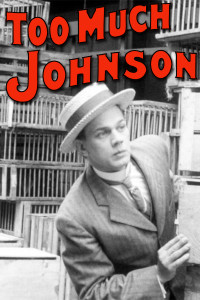 Too Much Johnson
Too Much Johnson
Orson Welles | USA | 1938 | 80 min
It was a great pleasure to see a beautiful 35mm print of Orson Welles’ lost film, Too Much Johnson. Jared Case of the George Eastman House was on hand to provide narration during the picture that contextualized the film’s story, its history, and rediscovery. Too Much Johnson serves as not only a precursor of Welles’ later stylistic flourish but also as a revelation of his uncanny knack for slapstick, a quality we don’t associate with the famed Wisconsin-born director. But even without the carefully framed extreme close-ups, canted angles of towering architecture, and action staged in long shot, this footage is worth seeing purely for the display of Joseph Cotten’s comedic physicality. Too Much Johnson may be an incomplete film, but viewed this way—with Case’s informative narration and the stunning piano accompaniment of David Drazin—it is an utterly complete cinematic experience.
 Ride the Pink Horse
Ride the Pink Horse
Robert Montgomery | USA | 1947 | 101 min
Being a noir buff and having read about this film prior to this screening, I wanted to like it more than I actually did. Robert Montgomery turns in one of the most laconic films noir I have ever seen. It is, of course, a laconicism whose motivations are understandable and even a little more on the nose than expected, but at some point it moves from laconic to tedious. There are some excellent shots and sequences (especially the beating handed out to a character by two thugs as seen from the POV of a spinning carousel), and once again, the good folks at the Festival supplied us with a beautiful 35mm print in which to view them. I’d say it’s essential viewing for noir fans, but not necessarily essential repeat viewing.
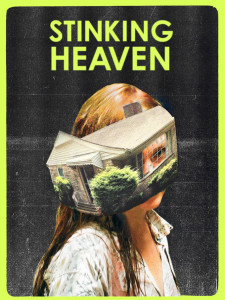 Bad at Dancing | Joanna Arnow | USA | 2015 | 11 min
Bad at Dancing | Joanna Arnow | USA | 2015 | 11 min
Stinking Heaven | Nathan Silver | USA | 2015 | 70 min
You can read my take on Nathan Silver’s Stinking Heaven here. Suffice it to say, I enjoyed it even more the second time around. During the Q&A, Silver talked about how his improvisational style lent itself to correspondences that the audience could make within the story, and that is just one of the things about his very organic filmmaking sensibilities that I enjoy. Those of you who missed the film should be sure to check out the April 26 screening at Micro-Wave Cinema, where Silver’s film previous to this one, Uncertain Terms, will be screened. Preceding Stinking Heaven was Joanna Arnow’s short Bad at Dancing, which is a pretty amazing 11 minutes of filmmaking. It is funny, awkward, frustrating, thoughtful, and true. In other words, it’s one of those films that you just wish there were more of.
 Wisconsin’s Own Shorts: Non-Fiction
Wisconsin’s Own Shorts: Non-Fiction
This program was a mixed bag. My favorites were The Somber Vault—a challenging experimental film that is haunting in the way only something truly beautiful can be—and the experimental/documentary hybrid Jerry, which was simultaneously fun and hypnotic with its camera passing over a highway at high speed. The 414s: The Original Teenage Hackers was enjoyable but felt more like a proof-of-concept film than a complete portrait; I wanted to see more. Conversely, One Money had some interesting cinematography and dared to tell its story with little context, but ultimately felt overlong. Unfinished Legacy and Ode to Discordance were both interesting and well made. My main issue with the program is that the audiences for homegrown documentaries and experimental films have little crossover, and this seemed especially true at this screening. During the experimental films, I overheard several people talking over the films (which was especially annoying during The Somber Vault, as it is a silent film) or saying things like, “I hope this isn’t another weird one.” While I don’t necessarily object to the concept of them being programmed together, I would strongly recommend that the films be more carefully introduced, so as to give the audience a better idea of what to expect.
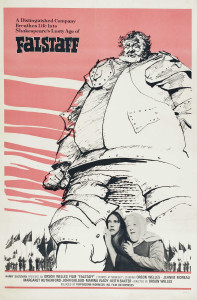 Chimes at Midnight
Chimes at Midnight
Orson Welles | Spain, France, Switzerland | 1965 | 115 min
When I first saw this film years ago on a barely serviceable DVD, I found myself impressed with the way Welles stitched together the tale of Falstaff from various plays. This time, I was awed by the film’s style. The angularity of Welles’ compositions and the editing, not to mention Welles’ own performance, are nothing short of masterful. Somehow, it’s also the first screening I’ve ever attended in the Capitol Theater, which is an invaluable component of the Festival’s location roster. This was the program I was most excited about at this year’s festival, and the combination of venue and beautiful DCP made it even better than I could have hoped for.
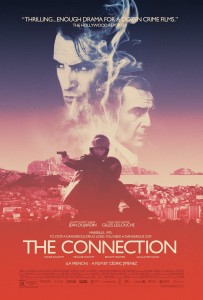 The Connection
The Connection
Cédric Jimenez | France, Belgium | 2014 | 135 min
Billed as the French side of The French Connection, I was halfway expecting to draw comparisons to William Friedkin. While there are some to be had, the film’s vitality reminded me more of 1980’s Brian De Palma and 1990’s Michael Mann. In other words, it’s one of the best crime epics in years. Jean Dujardin (star of the OSS 117 films, Festival favorites) turns in a thrillingly complex portrayal of a relentless cop out to stop the French drug cartels of the 1970’s. This is Jimenez’s solo debut (he co-directed two other features), and I can’t wait to see what’s next from him. I sincerely hope this film rolls through Madison for a theatrical run.
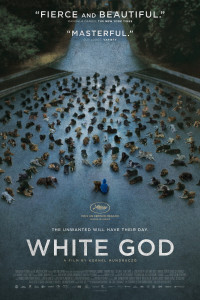 White God
White God
Kornél Mundruczó | Hungary, Germany, Sweden | 2014 | 119 min
As Jim and I have both mentioned elsewhere, this is easily the most disappointing film we’ve seen thus far at this year’s festival. The film’s striking cinematography (including a spectacular final shot) and the performance of twin dogs Luke and Body as Hagen (the canine protagonist) were unfortunately not enough to salvage the rest. What was supposed to feel fresh or fun played for me as a collection of genre clichés, and while the last third of the film is pretty patently absurd, it still managed to cling to a sense of seriousness that was distracting and ultimately ridiculous itself.
All in all, as usual, more highs than lows so far. I will talk more about the second half of the festival in a future post, which will include thoughts on A Hard Day (which I saw this evening and loved), The Russian Woodpecker, In Order of Disappearance, Where the Sidewalk Ends, Western, Manglehorn, and the unmissable Polyester IN ODORAMA! Until then, we’d love to hear from you about the films you’re seeing. Be sure to post your favorites in the comments section, and hopefully we’ll see you at some of the remaining screenings!